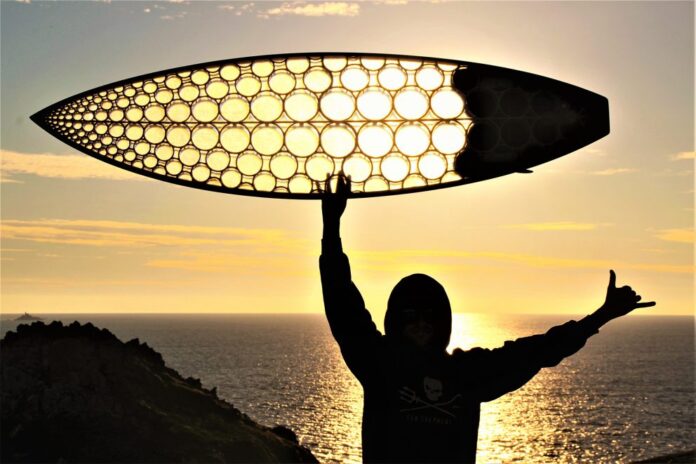THE SURFBOARD
If there is one important thing in this project, it is the performance and durability of the boards. The ecological side is hardly a selling point anymore, but an essential. The idea is not to eco-produce boards that don’t last over time. If the renewal rate of these boards is lower than that of a traditional polystyrene board, then we’re all wrong!
Thinking of the performance, we approached the best shapers in the area to refine our calculations. We got a 6.0 board with 30L and a weight of 3.4kg. Although predictions in hydrodynamics, fluid mechanics, RDM (Material Resistance) calculations have been made on a computer, it is only how the surfer feels in real conditions that can be the judge. This first board was a real success on several points – but also has some flaws that need to be corrected on the next iteration. For example, it feels a little too stiff, and the central structure will have to be modified to ensure longer lifespan. In terms of production costs, we are really satisfied.
In the specifications for the thermo-formable material, we had the choice of making it a recyclable or biodegradable material – we chose the first. If the board is broken or cannot be repaired, it can be brought back to our workshops, subject to a discount on the next material, so we can pass the core of the board (the one that is 3D printed) through a crusher and then an extruder, thus remaking the reel of material. Also, although fibreglass was chosen on this first model, we are considering applying flax or hemp fibre for future boards.
Also, there is a specificity about this kind of board: Due to their internal vacuum structure, we installed a Goretex type pressure relief valve at the leash attachment. In order to release the pressure stored during the session, as well as with temperature variations, the surfer must open and leave this valve open after each session, closing it before returning to the water.





